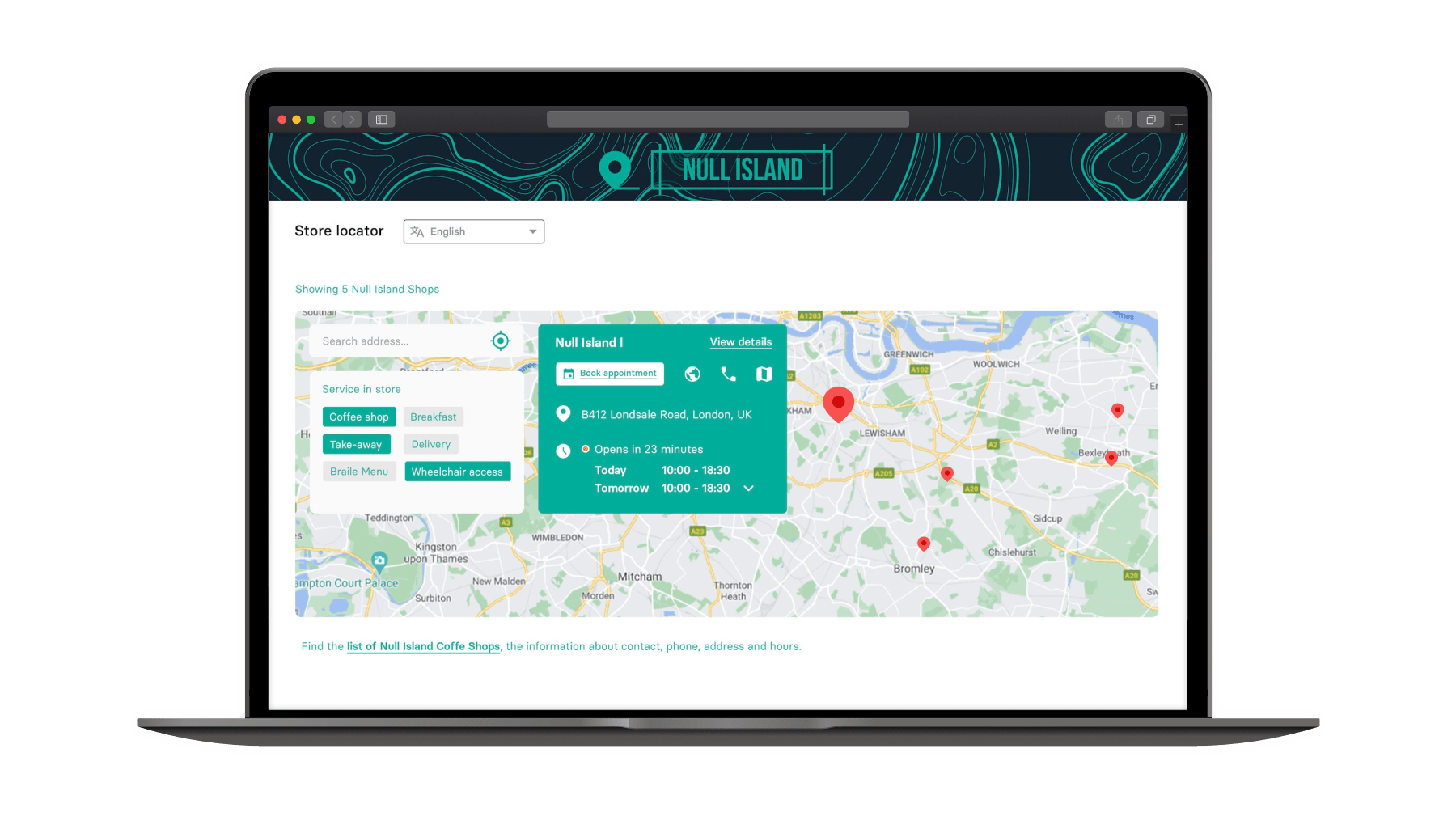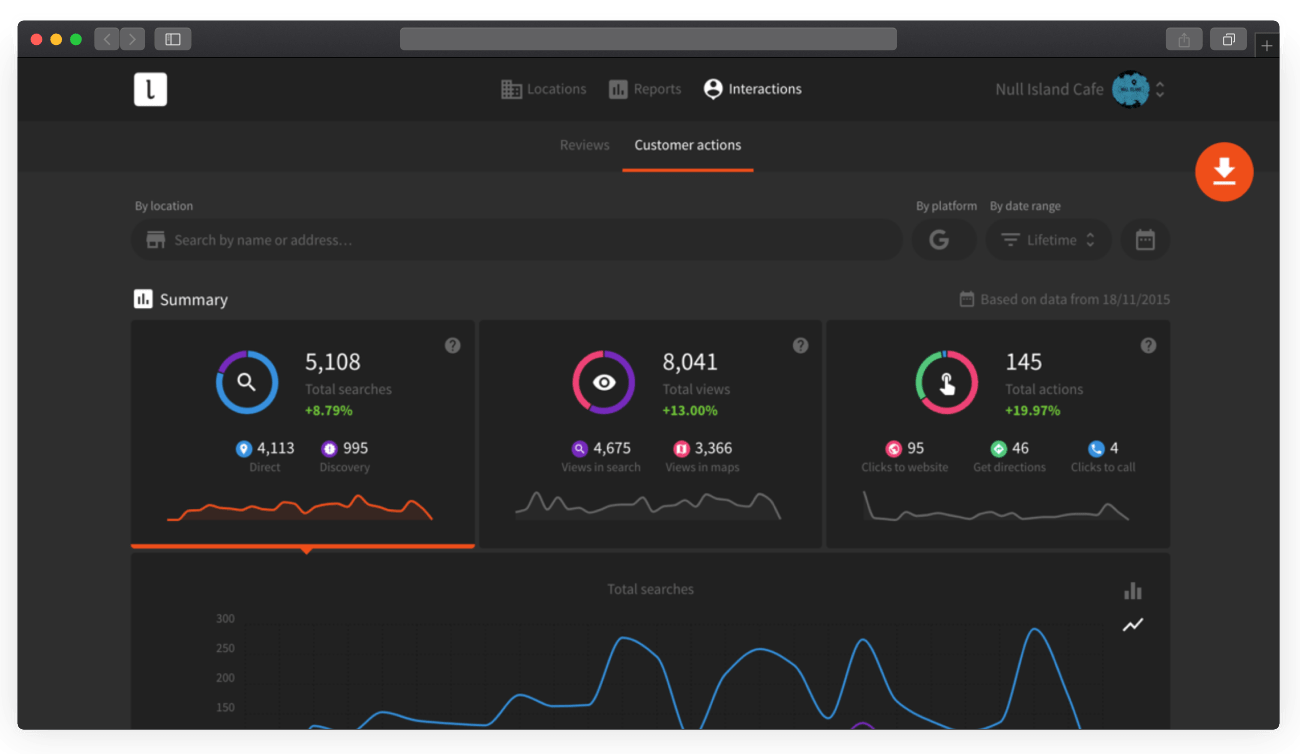Localistico
Localistico is a fast-growing startup from the UK offering business solutions to improve location discovery, presence on the internet, and search for brick & mortar businesses.

Their main product allows multi-store brick & mortar businesses to automatically publish and update business location profiles across a number of services such as Google Maps and Foursquare.
We built a web application based on Ruby on Rails as the stepping stone for another one of their products: A tool to automatically generate and manage landing pages for locations.
Localistico contacted us when their business was taking off. As the usage of the platform was rising, technology needed to keep up and increase operations efficiency while enhancing their product offering at the same time. Therefore, Localistico wanted us to work on a couple of side projects to help them achieve those goals.
Store pages
The first project we worked on is a small application to generate landing pages for stores and venues. This tool is being used to enhance their main product offering, by not only allowing to publish location profiles to external services but also generating custom static pages that can be hosted in the businesses' own domain.
The power of these pages lies in that they are 100% customizable.
These pages can:
- Match the corporate guidelines of the business.
- Embed different types of media such as images, video, or maps, among others.
- Link to other pages, even those generated with our system.
One of the key requirements of the tool is that pages need to be blazing fast without requiring a huge infrastructure. To achieve this goal, we make heavy use of caching. We use AWS CloudFront as a CDN (Content Delivery Network) to avoid the need to hit the Rails application while pages don't change.
Using a CDN achieves two very important goals. First, pages are delivered faster to the user because CloudFront has a large number of servers across the globe. Second, the Rails application needs minimal infrastructure because it is only hit once when a page changes.
This also means that the application is highly scalable and supports a very high number of concurrent users. Page load speed is important because companies using Localistico have high loads of traffic. Localistico is servicing huge companies like O2, Vodafone, Camper, Yamaha, and Orange among others.
Photo Booth
The second application we built for Localistico is an internal tool to help customer service and operations to add and update pictures of the businesses' stores. This tool is extremely simple and has a very specific goal, so we built it to do it extremely well.
The tool allows users to upload a set of images in different ways and add them to stores in batch. It also helps the users to complete venue profiles very quickly without the need to modify each store individually, which would take a long time and is more error-prone.
We use Kubernetes to deploy the Photo Booth application in an easy and robust way. Using Kubernetes permits us to make modifications to the infrastructure and deploy new versions quickly, and makes it very scalable to support future usage needs.
One of the pivotal moments in the project was when, during the COVID-19 pandemic, the side project for the marketing department, which we had built at the beginning of the project, ended up propelling the business to new heights. This success forced the company to pivot to another business model, making it more successful. Luckily, the architecture we helped to build in the past made it easy to adapt and change things around overnight.

Project tech stack
Ruby on Rails
Ruby on Rails is a server-side web application framework written in Ruby under the MIT License.React
React is a library for building user interfaces. Its strengths are its high-performance and a very complete developer toolset, allowing you to build very robust and efficient applications.PostgreSQL
PostgreSQL, also known as Postgres, is a free and open-source relational database management system emphasizing extensibility and SQL compliance.Kubernetes
Kubernetes is an open-source system for automating deployment, scaling, and management of containerized applications.
Working shoulder-to-shoulder with the Localistico team
Localistico has a team of engineers and designers of their own, and we coordinate with them on a daily basis to improve the platform and learn from each other.
We also collaborate with the design team regularly. In particular, the design team uses the Store Pages application to create pages for some of their businesses, so we are in constant communication to make adaptations for their needs. And, of course, we too collaborate with the development team regarding the Localistico API to achieve seamless integration between these tools and the Localistico core product.
How have we helped our client?
By taking care of the implementation and maintenance of these two side projects, we have given Localistico the ability to focus on their core business.
Working with us is enabling them to enhance their products offering and make their customer management processes more efficient.
With Store Pages, we have helped Localistico to offer a new very valuable service for businesses. Businesses need to have pages for their venues, but often they have neither the time nor the skills to implement and manage them. By using this tool, Localistico can seamlessly offer these pages to businesses with zero hassle from their part.
With Photo Booth, customer service has gained efficiency when adding pictures to stores, a process they previously had to do manually one store at a time. This has enabled Localistico to serve businesses better by focusing efforts on more important affairs.
We have been working together since 2017, and we look forward to working with Localistico for years to come!